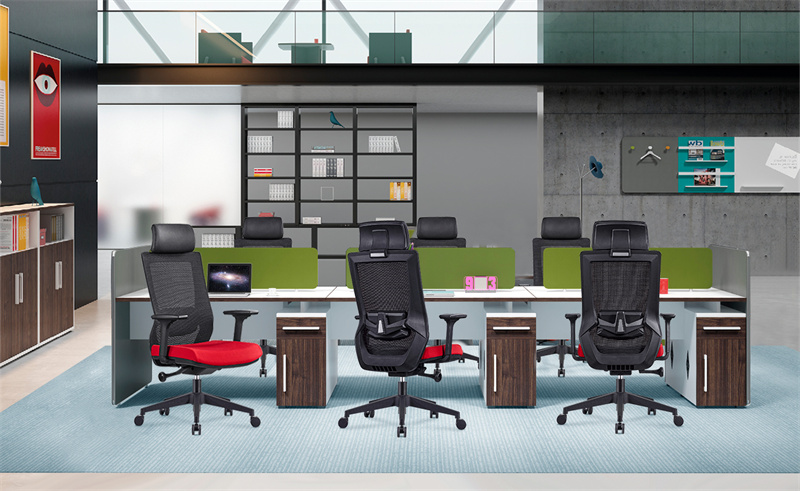Seat size
Seat height: should be selected according to the individual height, to ensure that the feet can be flat on the ground, the thigh is parallel to the ground, which can effectively reduce the pressure on the leg. Generally speaking, the height of the seat is 450-550 mm.
Seat depth: To be able to support the entire hip and thigh, usually between 400-500 mm is appropriate, to avoid the seat depth is too short resulting in thigh suspension, or the seat depth is too long to press the back of the knee.
Seat width: to be able to sit comfortably and have a certain activity space, generally not less than 450 mm, for fatter people, you can choose a wider seat.
Chair back design
Fit the spine curve: The back of the high-quality ergonomic office chair should be able to accurately fit the natural curve of the spine, provide good support for the lumbar spine, thoracic vertebra and cervical vertebra, help maintain the normal physiological curvature of the spine, and reduce the pressure on the back.
Adjustable: The Angle and height of the chair back is preferably adjustable. The tilt Angle is generally adjustable between 90°-120° to meet different working positions and rest needs; The height of the back of the chair should be adjusted according to the height of the individual to ensure effective support for the entire back.

Lumbar support
Support strength: Good lumbar support is one of the key elements of an ergonomic office chair. It should be able to provide enough strength to support the forward physiological curvature of the lumbar spine, relieve the pressure of sitting for a long time on the waist, and prevent fatigue and damage to the waist muscles.
Adjustable: The position and strength of the waist support can best be adjusted according to individual needs to adapt to different sitting and body conditions.
Handrail design
Height adjustment: The height of the handrail should be adjustable, so that when the arm naturally drops, the elbow can be comfortably placed on the handrail, reducing the burden on the shoulder and arm. Generally, the height of the handrail is about 200-250 mm.
Width and softness: The width of the handrail should be able to accommodate the arm, and the surface material should be soft to avoid causing pressure on the arm. Some office chair armrests also have front and back, left and right adjustment function, can further improve the comfort of use.
Cushion material
Comfort: The seat cushion should have good elasticity and softness, and can evenly distribute hip pressure. The common cushion materials are sponge, memory cotton and mesh cloth, etc. The sponge cushion is elastic, the memory cotton cushion can be shaped according to the shape of the body, and the mesh cushion has good air permeability.
Air permeability: Choose a seat cushion material with good air permeability, which can avoid hot buttocks and sweating after sitting for a long time, keep dry and comfortable, and improve the comfort of sitting for a long time.
Stability and security of the chair
Stable structure: The frame of the office chair should be made of strong materials, such as metal or high-strength plastic, to ensure that the chair is stable and reliable during use, and is not easy to shake or dump.
Quality certification: Choose an office chair that has passed the relevant quality certification, such as BIFMA (American Office Furniture Manufacturers Association) certification, which indicates that the chair meets certain safety and quality standards.
Post time: Mar-17-2025